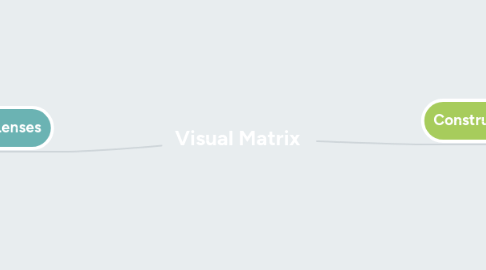
1. Constructivist Lenses
1.1. A theory of learning that emphasizes the active construction of knowledge by individuals (Gunning, 2010). This theory is characterized by the notions that learning can occur in the absence of observable indicators, that learning often results from a form of hypothesis testing, and that the process of making inferences is central to the learning process.
1.2. Inquiry Learning
1.2.1. Inquiry Learning developed by Dewey (1916), emphasizes the importance of problem solving, social collaboration, and motivation, based on interest and curiosity in learning.
1.3. Schema Theory
1.3.1. Schema Theory, first suggested by Bartlett (1932) and later expanded by Anderson and Pearson (1984), conceptualizes the way in which knowledge is organized in the brain and discusses the implications of that organization for learning and reading.
1.4. Transactional/Reader Response Theory
1.4.1. Transactional/Reader Response Theory, put forth by Rosenblatt (1978), further extends in application of Schema Theory by arguing that all readers have unique responses to reading texts owing to the unique nature of their background schemata.
1.5. Psycholinguistics Theory and Whole Language Theory
1.5.1. Psycholinguistic Theory emphasizes the role of language in the reading process, and Whole Language Theory uses that information as the cornerstone of a philosophy of literacy learning and instruction for students.
1.6. Metacognitive Theory
1.6.1. Metacognitive Theory stresses the importance of specific types of mental engagement during the reading process to build accurate comprehension experiences.
1.7. All of the theories presented are built on the premise that individuals are active in the construction of their own knowledge, and all of the theories hold current value for both classroom instruction and research.
2. Developmental Lenses
2.1. Theorists working from this perspective attempt to articulate the growth of specific behaviors and abilities across time.
2.2. Theory of Cognitive Development
2.2.1. Piaget's Theory of Cognitive Development, one of the most famous theories used to explain children's overall cognitive development, can be used to help literacy educators understand the learning stages through which students progress as they mature and their relationship to literacy achievement.
2.3. Maturation Theory
2.3.1. Maturation Theory promoted the idea that literacy instruction should be delayed until children are 6 1/2 years old, supposedly the age at which children would be most successful at learning to read.
2.4. Theory of Literacy Development
2.4.1. Theory of Literacy Development suggested that literacy development begins much earlier, in children's homes, and is based on meaningful learning experiences. Holdaway created activities such as the use of big books and shared reading to help educators re-create the kinds of early literacy experiences found in the homes of precocious readers.
2.5. Stage Models of Reading
2.5.1. Stage Models of Reading describe the stages through which children progress in the development of their word identification abilities (Chall, 1983; Ehri, 1991; Frith, 1985).
2.6. Emergent Literacy Theory
2.6.1. Emergent Literacy Theory describes a broader set of abilities than do the Stage Models, and explains how these abilities develop from birth onward (Morrow, 2005, 2012).
2.7. Family Literacy Theory
2.7.1. Family Literacy Theory focuses on the unique role of the home and parents in children's development of literacy.

